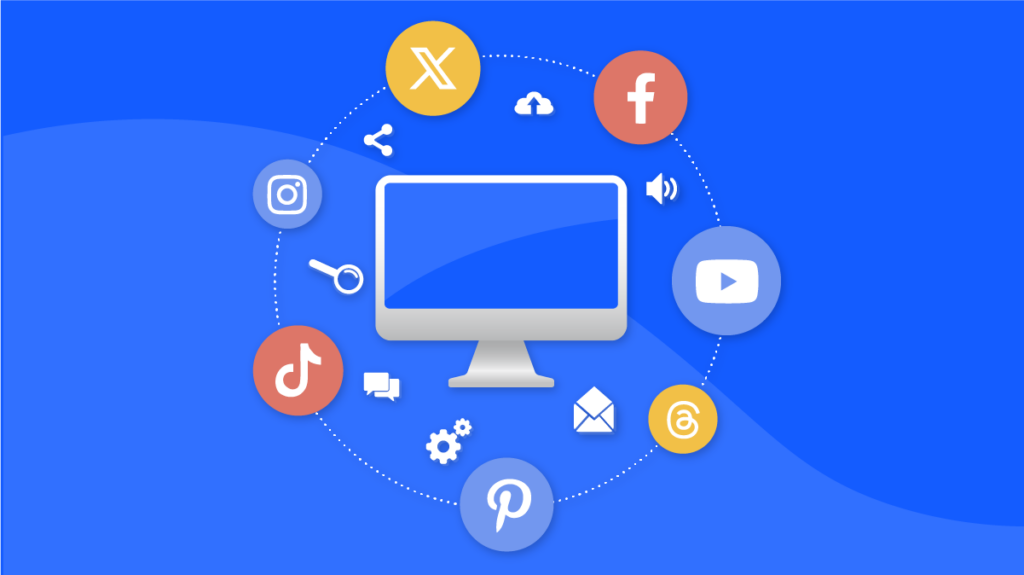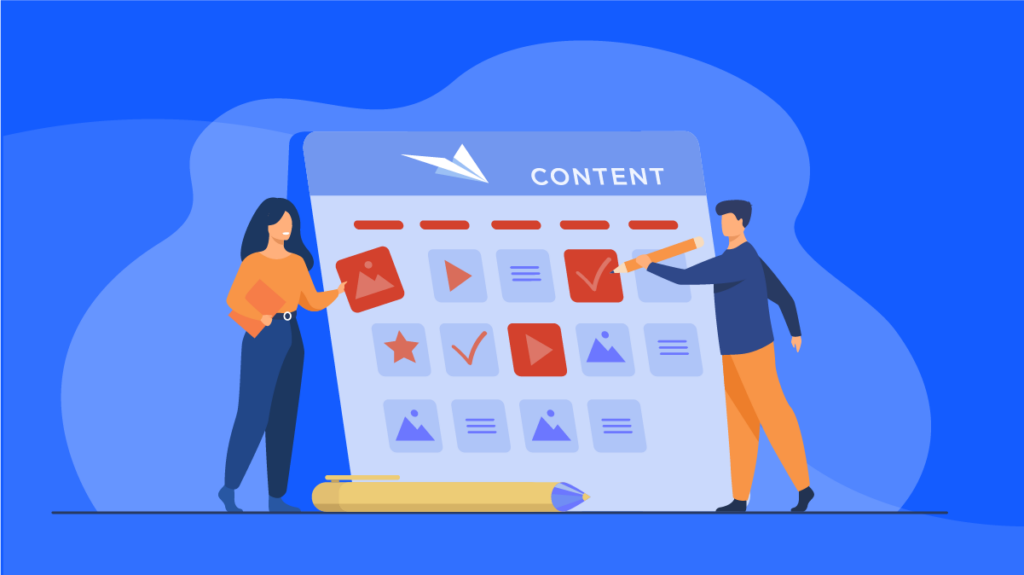Which Social Media Platforms Should My Business Be On?
It’s a question I’ve received from hundreds of business owners.
Which social media platforms should my business be on?
The only question I hear even more regularly is the one that typically predates it – do I need to be on social media?
Here’s the reality in 2023:
- There are almost 5 billion global social media users (~61% of the population)
- In the United States, the average social media accounts per user is 7.1 social media accounts
- A whopping 77% of businesses use social media to reach customers
So does your business need to be on social media? No, but it would help if it was. And which social accounts should you start with? Well, that’s why you’re here. Let’s dive in.
The Impact of Social Media for Businesses
A wise man once said “life is what you make it.” Like life, social media is what you make it too. If you devote the proper time and attention to your social media strategy & execution, it can be an extremely beneficial resource in generating new clients and retaining existing ones.
Here are the main ways that social media can impact your business:
- Connecting with New Customers. Through paid social efforts (like Facebook Ads), you are able to get your message in front of an entirely new audience – connecting your company with new opportunities for customer acquisition + increased revenue.
- Building Brand Loyalty. With your existing customers, you can invite them to follow your social pages and continue to strike up conversation and engagement with your clientele. Social media can be an easily accessible way to stay top-of-mind for your customer base.
- Employee Attraction. In 2023, one of the largest bottlenecks for business growth (across many industries) has been staffing shortages. Social media has been a proven way to attract and retain employees by highlighting the culture in your office, and benefits of working at your company.
- Gathering and Showcasing Reviews. While some channels (i.e. Facebook) allow for reviews to appear directly on your page, you also can share positive reviews/testimonials as social posts across all of your channels. This helps build your authority & opens the gates for more work to come your way.
- Serving as a Gallery/Showcase of Your Company’s Work. Many businesses benefit from utilizing their social feeds to showcase custom projects, new products, and other work their company has done. This becomes a great inspiration board for new & returning customers alike.
- Increasing Brand Awareness. At its simplest form, Facebook and comparable social media networks help to increase your brand awareness and grow your audience. Whether that be with today’s customers, or your future clientele, having more people know and recognize your brand is a positive thing for many reasons.
There’s a reason that so many businesses flock to social media. In many cases, your social media use will be free (or relatively inexpensive) to get started with.
However, understanding your resource pool and seeing which social media networks make the most sense for your business to be on is an important piece of the puzzle. We’ll discuss that in the next section.
Which Social Platforms Should Your Brand Use?

I’ve seen many businesses make the mistake of thinking they need to be on every single channel. In no time, they’ve burnt out their staff and run out of content – and still have minimal results to show for it on following & engagement.
Instead, when looking ahead to where your company should start, I think it’s important to assess two things:
- Where does your audience exist
- How much time can you devote to social media
The Case for Facebook:
- Gender: popular amongst all
- Age Groups: popular amongst all, but particularly 25+
- Main Use: keeping up with family and friends, life announcements, watching videos, reading news articles, etc.
- Companies That Do Best: both B2B and D2C can succeed here
- Best Practices: organic social reach can be limited – may have to test boosting or paid ads to reach new audiences
The Case for X (Formerly Twitter):
- Gender: popular amongst all, but a bit more male-dominated
- Age Groups: popular amongst all, but primarily 25-34.
- Main Use: keeping up with news, joining conversations, following current events or live broadcasts, politics, sports, etc.
- Companies That Do Best: D2C has the most success on this platform
- Best Practices: to perform well on X/Twitter, you need to be a consistent conversation-initiator – either through your own posts, or jumping on others’ threads.
The Case for Instagram:
- Gender: popular amongst all, but a bit more female-dominated
- Age Groups: popular amongst all, but primarily 18-34
- Main Use: sharing photos and videos, sharing day-in-the-life or behind-the-scenes content, showcasing tutorials, etc.
- Companies That Do Best: both B2B and D2C have success on this platform
- Best Practices: in recent months, Instagram is heavily favoring Reels content – so posting videos as Reels has been seen to do a great job of generating a new audience (even when the post is not boosted).
The Case for TikTok:
- Gender: popular amongst all, but a bit more female-dominated
- Age Groups: popular amongst all, but primarily 18-34
- Main Use: taking trending topics and templates and applying to yourself/your business, building content series, using funny or interesting short-form video, etc.
- Companies That Do Best: D2C primarily has the most success on this platform
- Best Practices: anyone who’s had a TikTok do well will tell you – post consistently, monitor trends, and make sure your content feels native to the platform. People don’t want to see your videos that were clearly made for YouTube – cut up and edit concepts to be specific to TikTok.
The Case for LinkedIn:
- Gender: popular amongst all, but a bit more male-dominated
- Age Groups: narrowed in on 21-65, but primarily 25-34
- Main Use: sharing industry-specific content, providing management/business advice, “LinkedInfluencer” content → i.e. here’s 10 things we do everyday to improve our business, job- and culture-related posts, etc.
- Companies That Do Best: B2B. I’d argue that virtually no D2C brand needs to be on here, outside of for hiring purposes
- Best Practices: create content that can be engaging and conversational – LinkedIn posts go way up in reach once you start having others comment on them. Also, invite your 200 free connections/invites per month to build your audience.
The Case for Pinterest:
- Gender: mostly female-dominated
- Age Groups: most popular amongst 18-34 and 50-64.
- Main Use: sharing how-to posts, recipes, DIY content, galleries/inspiration photos, and similar content.
- Companies That Do Best: D2C.
- Best Practices: Pinterest ads, for certain D2C brands, are a great way to leverage new traffic to your website. Try utilizing their search ads to show relevant content that answers topics their users may be looking for.
The Case for YouTube:
- Gender: popular amongst all
- Age Groups: popular amongst all – evenly split with virtually all demos
- Main Use: sharing longer-form video (shorter-form on YouTube Shorts), testimonials/educational videos, tutorials and how-tos, and any other content that requires video treatment to explain.
- Companies That Do Best: both B2B and D2C can succeed here
- Best Practices: building your YouTube audience can be laborious – YouTube Ads are a good way to get there quicker.
The Case for Threads:
There is no case for Threads, lol. I’m mostly serious. Only in rare cases is it worth a business being on here at the moment, but you may want to snag your username/handle to preserve it for if/when Threads gets more popular.
Building a Social Plan for Your Business

Now that you’ve read a bit about each of the main social platforms that your business can have a presence on, it’s important to consider where to start. Let’s get that plan set in place.
- Amount of Social Platforms to Have: however many you can post 3-5 times per week on. If you are not able to be consistent in posting, consider delaying your start – ‘tis better to focus attention on what you can get done, rather than have too many platforms that are given inconsistent attention.
- For most businesses to start – that may only be 2-3 platforms (which is totally okay!).
- Building Your Pages: make sure to utilize a consistent handle and naming convention, consistent descriptions (though they can be personalized to each platform), and consider a tool like Linktree to link out to your other platforms from your bio. Oh, also use a consistent profile photo/cover photo.
- Posting Your Content: I wrote a blog earlier about how AdShark handles our social posting – utilize that as a good starting guide on how you can be posting on your pages.
- Best Social Platforms to Start With: see which make the most sense for you, based on my descriptions of age/gender/content/companies in the previous section.
- In most cases, Facebook & Instagram are the best to launch with.
Looking to learn even more about how social media can impact your business & how to get started? Let’s chat strategy! We’d love to help advise you on how to increase brand awareness and acquire more customers in 2024. Whether it’s organic social media, or paid social ads, we can help provide some additional insight if you’re interested. Thanks for reading!
Ready To Grow?
Let's Talk!


